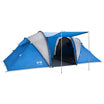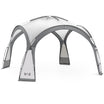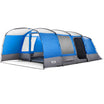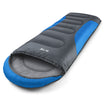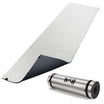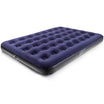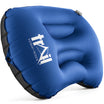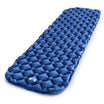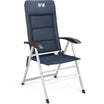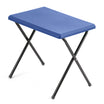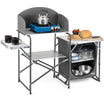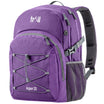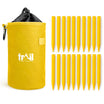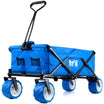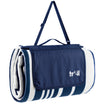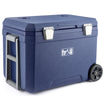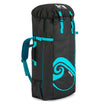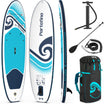Whether you're a seasoned camper or a first-timer, the world of camping comes with its own unique language. From "fibreglass" to "flysheets," navigating the lingo can sometimes feel like you need a dictionary just to pitch a tent! But fear not—this guide is here to help you decode the essential terms you’ll encounter on your hunt for the perfect tent. So grab your compass and get ready to learn the fun and quirky language of the great outdoors!
Types of Tent
|
Pop Up Tents  Pop up tents are a popular choice with festival campers who are looking to pitch up and party as quickly as possible. Unlike other tents, they have a coiled frame to instantly pop into shape and can be pitched in less than a minute. However, they’re smaller than other tents and aren’t as waterproof, making them better suited to shorter trips during the dry summer months. |
Air Tents  If pitching a tent puts you off camping, an air tent is a perfect option. Instead of fiddly fibreglass poles, they have inflatable air poles for a stress-free set up. Simply peg the tent down, then pump it up for super-fast and easy pitching. Spacious and comfortable, they're also great if you like a bit of luxury when you're camping. Plus, they're highly waterproof to stand up to the British weather.
|
|
Dome Tents  Dome tents have poles which cross in the middle, forming a large dome shape with plenty of space. Also, the crossing poles provide extra strength and stability, making them more wind-resistant than other types of tent. Not only are they easy to pitch, but they have a bedroom and front area to store equipment. As a result, they’re great for weekend campers who are looking for extra space.
|
Tunnel Tents  Searching for something bigger for a group or family outing? Look no further than a tunnel tent. Unlike dome tents, they have arched poles which form a spacious tunnel shape. As well as being tall enough to stand in, most have a living area which is big enough for a table and chairs. Plus, multiple bedrooms for extra privacy while sleeping. Because of their size, they're great for longer camping trips.
|
Tent Components Terminology
While all types of tents have their own make up, there are some components which are fairly consistent across all different styles. Understanding what these all mean will help make the tent selection process a lot easier!

|
Bedroom Pod (Inner Fabric) Bedroom pods clip onto the inside of the tent to create a warm, comfy sleeping space and reduce light infiltration. For extra privacy and easy access, most have a zip entrance door. |
Flysheet (Outer Fabric) A flysheet is the outer fabric on a tent and is usually a tough polyester material. Although its purpose is to keep you warm and dry, the amount of rain protection it provides depends on its Hydrostatic Head. |
|
Living / Storage Area In addition to a bedroom, most tents have a living area to relax and store your gear. Because tunnel tents are bigger, the living area often has space for a table, chairs, and other furniture. |
Entrance Doors Although smaller tents tend to have a single door with two way zips, larger tents usually have multiple doors to provide extra access to groups and families. Some also have secondary mesh doors to allow light in while keeping insects out. |
|
Windows Most tents have clear PVC windows in the living area to aid visibility. Whereas some have normal windows, others have half mesh/half PVC windows to aid ventilation. Plus, curtains for extra privacy. |
Mesh Vents Most bedrooms have air vents with mesh fabric to keep out insects. The vents also have covers, so you can close them up on colder nights to keep the bedroom warm. Conversely, you can open them on warmer nights to keep the bedroom cool and reduce condensation. |
|
Sewn-In Groundsheet A groundsheet is the floor of a tent and comes either sewn-in or loose. Sewn-in groundsheets come pre-fitted, keeping you fully sealed off from damp, draughts, and insects. |
Bathtub Groundsheet Whereas a sewn-in groundsheet comes pre-fitted, a bathtub groundsheet is loose with toggle and Velcro attachments for easy fitting. Raised sides help to keep out damp and draughts. |
|
Cable Access Point Some tents have cable access points to power a kettle, charger, and other electricals via external mains connection. However, this is only possible if your campsite has an electric hook up point. |
Ceiling/Lantern Hook Tents with a larger living area often have a ceiling hook attached to one of the overhanging poles. As well as hanging a lantern to illuminate your tent at night, you can use the hook to dry out clothing. Or hang a piñata! |
|
Front Awning Some of our larger tents have an awning outside the entrance which has plenty of space for a table and chairs. So, you can dine outside in the fresh air while sheltered from the sun and rain. |
King Poles (Canopy Poles) Some of our larger tents come with king poles, allowing you to create a sun canopy. Simply use the poles to prop open the entrance door and increase light and ventilation inside the tent |
|
Fibreglass Poles Frame tents come with flexible fibreglass poles which are both lightweight and very strong. For compact storage, they usually come in sections with shock cords to easily pop together. |
TPU Air Poles Inflatable tents have thermoplastic polyurethane (TPU) air poles which are super-strong and rigid when inflated. Simply peg the tent down, then pump the poles up for super-fast and easy pitching |
|
Guy Lines All tents come with hi-vis guy lines for greater strength and torsional stability. Simply peg them in to the ground using provided pegs, or more specialist pegs to keep your tent from changing shape or flying away. |
Oversized Travel Bag All our tents come with an oversized travel bag for easy storage and transportation. Because the bag is extra-big, it has plenty of extra space inside it, making packing the tent a breeze. |
Technical Specs Terminology
Now the basics have been covered, it's time to get more technical. At Trail we have carefully considered all aspects of our tents so that we have a huge range from budget to luxury styles.
|
Sleeping Capacity Sleeping capacity refers to the maximum number of people who can sleep inside a tent. If you like lots of space, choose a tent one size up. For example, a three man tent if two of you are camping. |
Hydrostatic Head (HH) A Hydrostatic Head (HH) rating indicates how waterproof a tent is. For lighter showers, a tent requires a 1500mm HH. However, you'll need a tent with a 3000mm to 5000mm HH for heavier downpours. |
|
Dark Zone Technology Here at Trail, most of our tents have darkened Dark Zone bedroom pods. Designed using darker fabric, they significantly block out sunlight, allowing you to enjoy a deeper, more relaxing sleep. |
AGS Tech For ultimate wind-resistance, most of our larger tents have an extra-strong advanced guy line system (AGS Tech). By being connected by a tri-point system, each guy line is more effective at holding the tent position, without the need for an excessive amount of guy lines around your tent. |
|
Boston Valves On our air tents, each air pole has a Boston valve for easy pump connection. Simply release the first valve cap to connect the pump and inflate without any air loss. Or release the second cap to deflate the poles. |
Safety Purge Pump All our inflatable tents come with a safety purge pump for fast, easy inflation. Because it has a purge valve, it releases excess air once the air poles have reached 7PSI to safeguard from over-inflation. |

